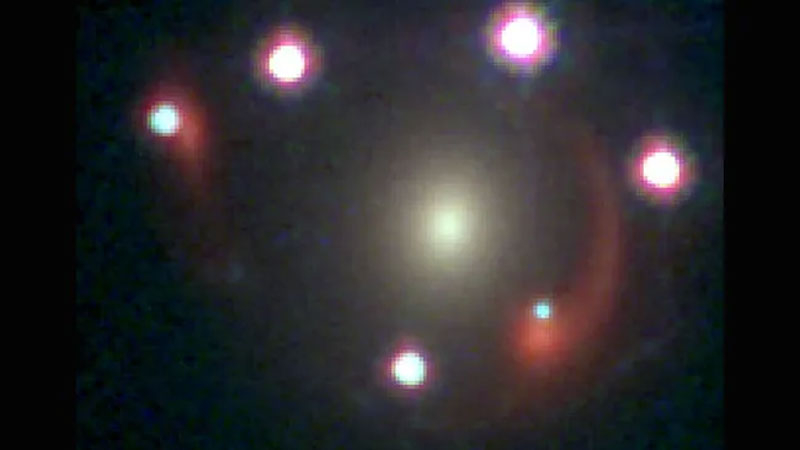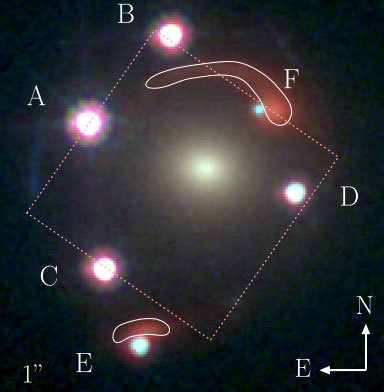Gravitational lensing, predicted 90 years ago by Einstein, was confirmed by observation four years after the publication of his work. This was done by observing the bending of star light by the Sun’s gravity during an eclipse. Decades later, with the advent of more advanced telescopes, gravitational lensing became a popular tool for studying the Universe. But until recently, no one had seen such a phenomenon as Einstein’s zigzag.

Image source: Frédéric Dux
It all started when astronomers became interested in the distant quasar J1721+8842. Its first observations were made in 2017 using the Panoramic Survey Telescope and Rapid Response System (Pan-STARRS) located at Haleakala Observatory in Hawaii. The object demonstrated the phenomenon of gravitational lensing, appearing in four copies in the photographs.
As Einstein explained back in 1915, matter is closely related to space-time. Massive objects bend spacetime, causing light to follow these curves. Curves, like lenses, focus and direct light, which is why in telescope images the same object will double, triple, and be visible simultaneously at different points in space. Most often, single gravitational lenses are observed. Maybe because they are easier to detect? But sometimes bizarre phenomena occur, such as a cross or an Einstein ring, when the mass that focuses the light of a distant object (a galaxy or cluster of galaxies along with the dark matter collected around them) is located in a precisely calibrated manner in relation to the object.
Quasar J1721+8842 turned out to be one of these unique objects. And the connection of the Webb telescope to his observation made the discovery truly rare and the first in history. Webb’s sensitivity made it possible to detect two more copies of the distant quasar – a total of six. It turned out that light from a quasar located 11 billion years away from us is refracted by two masses – it is gravitationally lensed twice. First, its light is refracted by a distant galaxy 10 billion years away, and then by a closer galaxy 2.3 billion years from Earth. All three objects are aligned in such a way that the light from the quasar seems to zigzag through space-time, deflected first by one galaxy and then by the other. No one has ever observed such an effect.

Copies of the quasar are indicated by letters, the arcs are copies of the distant galaxy (it has also “multiplied”), and in the center is the nearby galaxy
Moreover, the unique arrangement of the lensing masses and the light source (quasar) allows two measurements to be made simultaneously—to set constraints on the determination of the Hubble constant and to impose constraints on the equations for estimating dark energy. Usually you can do one or the other. Simultaneous assessment of both controversial quantities will give science more than other measurements.
As for the Hubble constant, there are hints that its value is different in the local Universe and in the early Universe. Little is known about dark matter. It “pushes” objects in the Universe and the further they are from each other, the faster they fly apart. Two points of refraction of light from J1721+8842 at different ends of the Universe are a convenient opportunity to look for differences. However, scientists warn that it is too early to draw conclusions. First, in-depth work by theorists is required, taking into account the data obtained, and this may take years.